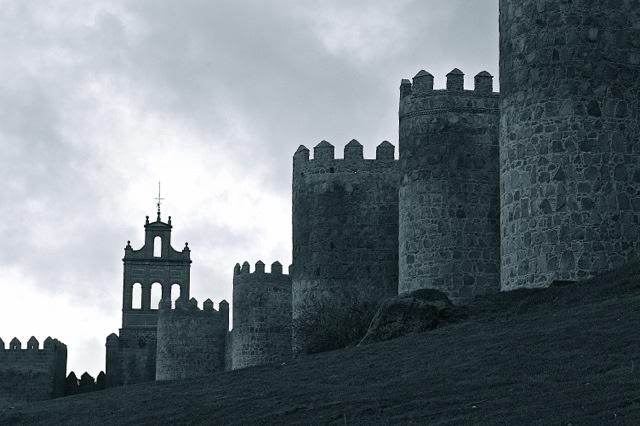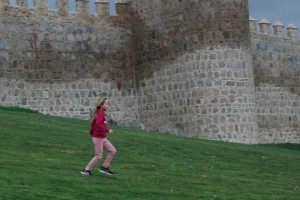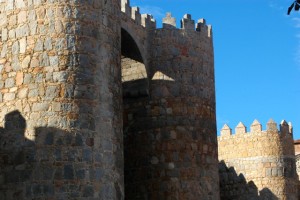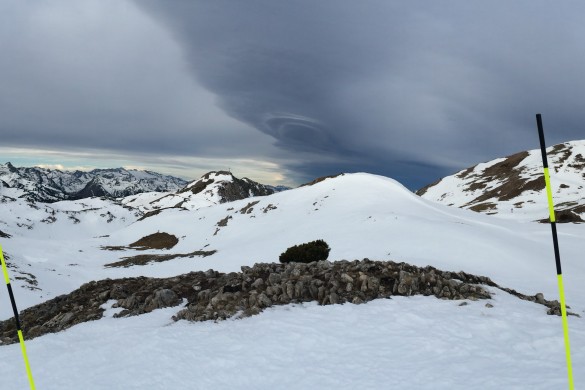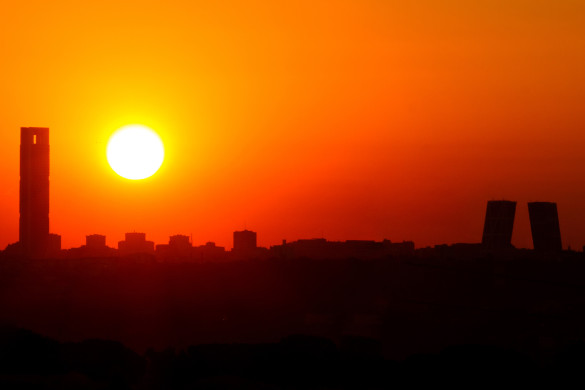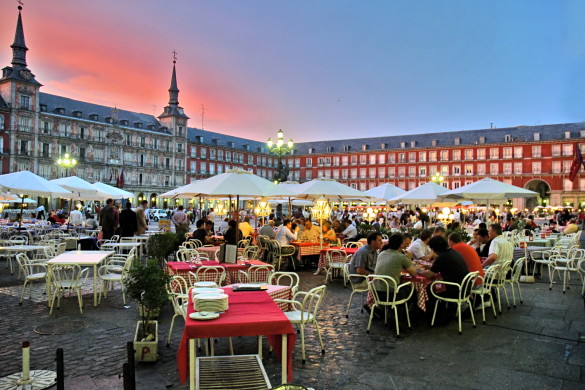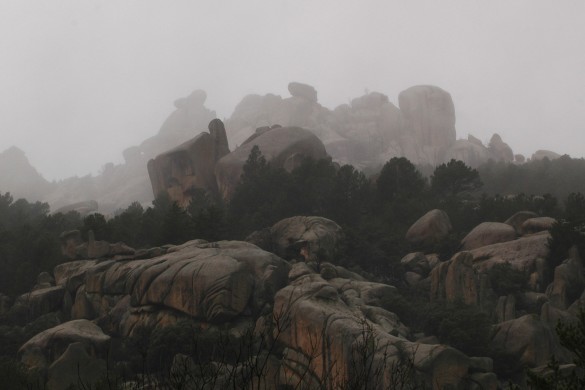We first caught sight of Ávila zooming past it on the way to Salamanca. Only one word can adequately describe it: breathtaking. Lit up in the black night sky, the City’s medieval walls and towers are a majestic sight: pristine, brilliant, perfectly preserved.
Ávila is one of the jewels of central Spain, about 120km to the west of Madrid, sitting proudly and eternally on an outcrop over the Adaja River. It’s a perfect day trip from the capital, about an hour and a half by road but separated by centuries in atmosphere. Ávila positively breathes history.
Close up, on an uncharacteristically chilly October day, the town’s walls look no less impressive. While the perspective offered by a distance of a couple of kilometres from the motorway lends them a note of grandeur, standing right beneath them on the northern slope you see them as an attacker might have: formidable and unbreachable.
The building of Ávila’s walls began in the late 11th Century, encircling a more or less rectangular town built on Roman lines. Whoever built the walls wasn’t messing about. They’re three metres thick, 12 metres high and have no less than 88 towers and nine gates.
We picked a spectacularly bad day to visit, as on days other than Monday you can access the wall through a visitor centre and walk about half the 2.5km periphery. We walked round the outside instead and enjoyed it hugely. The views from the south western side, over the river and towards the Sierra de Gredos are particularly spectacular.
Something that always strikes me about monuments and medieval buildings we visit in this part of Spain is just how well preserved they are . Ávila is no different. The walls are in spectacular condition.
This is likely to be largely because the climate tends towards bone dry, and everything is better preserved. Also perhaps that – as far as my research shows – the walls were never besieged. They were built following a period of serious instability in that part of Spain, but seem not to have been significantly tested. Another reason why the walls are in such condition is that local administrative authorities have looked after them well. In 1884 the site was declared a National Monument and then in 1982 Ávila itself was declared a UNESCO World Heritage site. (Which might seem grand, but every other town you visit in the area has the same distinction: see Toledo, Segovia, Cuenca, Salamanca, Aranjuez etc etc…)
While Ávila’s best side is undoubtedly the view from the outside, it’s charming within the walls also. The last similar town I visited was Carcassonne in France, and while it is also impressive (and has a thrilling history that Ávila seemingly lacks) the inside is like a giant medieval theme park, ruined by the ubiquitous commerce of tat and over-priced restaurants.
Ávila has not been ruined. Like every other Spanish town of its size it is jam-packed with bars and restaurants – apparently the most per capita in Spain – all of which offered typically good-value food. We picked one more or less at random – the Restaurante Reyes Catolicos – and it was notable for two things. First the Chuleton de Ávila, a rib eye steak which the region is noted for – we’ll get to Spanish food in a lot more detail another time, but for now worth noting that some of the best beef I’ve ever had has been from the Ávila/Salamanca area. Second, Jane ordered the menu del dia, which featured three Spanish stews in separate pots. Jane is not as sold on the virtues of Spanish food, but enjoyed these dishes immensely, particularly the chick pea stew.
We didn’t have a lot of time for the rest of Ávila on this trip – not least because we had children with us who were not amenable to tours of religious establishments or museums. But it is probably near the top of the ‘revisit’ list, because there’s a lot left to explore, notably the Gothic Cathedral and a number of other religious sites, including the celebrated El Real Monasterio de Tomas, which houses museums of oriental art and natural sciences.
And for those visiting Madrid with time to explore the region, Ávila is an essential stop.

